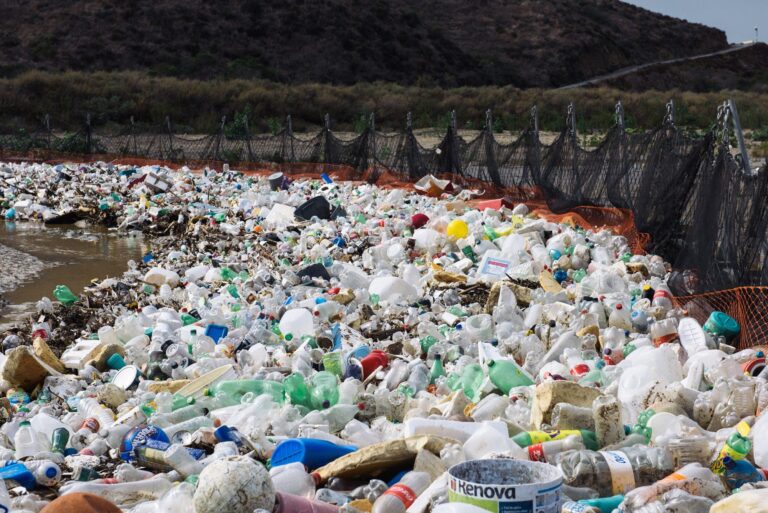The ongoing pollution crisis in the Tijuana River has reached a critical juncture, demanding immediate and decisive action from government authorities. For years, cross-border contamination has plagued communities on both sides of the U.S.-Mexico border, with hazardous waste flowing into the river and impacting public health, local ecosystems, and quality of life. As the situation worsens, local activists and experts urge officials to implement comprehensive solutions without delay. This article explores the urgent need for coordinated government intervention to address the environmental and humanitarian challenges posed by Tijuana River pollution.
Government Accountability and the Escalating Environmental Crisis
The persistent pollution of the Tijuana River represents a glaring failure of government oversight and environmental stewardship. Despite mounting scientific evidence and community outcry, federal, state, and local agencies have not succeeded in implementing effective solutions to curb sewage spills, toxic runoff, and industrial waste inflows. This inaction not only jeopardizes public health and regional ecosystems but also undermines trust in institutions tasked with safeguarding our natural resources. The critical nature of this crisis demands a transparent, coordinated response that prioritizes both immediate cleanup measures and sustainable long-term strategies.
Accountability must be enforced through clear benchmarks and regular reporting mechanisms, ensuring that promises translate into measurable outcomes. Key areas for urgent focus include:
- Enhanced cross-border collaboration to manage pollution sources from both the U.S. and Mexico sides
- Increased funding and resources dedicated to infrastructure upgrades and ecological restoration projects
- Robust community engagement programs to empower residents with information and participation opportunities
| Accountability Measure | Target Outcome | Timeline |
|---|---|---|
| Joint U.S.-Mexico Task Force | Integrated pollution monitoring system | 6 months |
| Infrastructure Repair and Upgrade | Reduction in sewage discharge incidents | 12-18 months |
| Community Reporting Portal | Real-time pollution alerts to citizens | 3 months |
Health Risks and Community Impact of Tijuana River Pollution
The ongoing pollution of the Tijuana River has led to serious health hazards for communities living near the border, particularly in San Diego’s coastal neighborhoods. Contaminants such as raw sewage, industrial waste, and heavy metals contaminate both water and soil, posing risks of gastrointestinal illnesses, skin infections, and respiratory problems. Vulnerable populations, including children, the elderly, and those with pre-existing conditions, face amplified dangers from exposure to these toxic pollutants. This public health crisis is compounded by frequent beach closures that disrupt outdoor activities and community well-being.
Beyond individual health, the broader community impact is profound:
- Economic losses due to decreased coastal tourism and fishing industry declines
- Environmental degradation affecting local wildlife and biodiversity
- Increased municipal costs for cleanup and emergency response measures
| Health Issue | Likely Cause | Affected Area |
|---|---|---|
| Gastrointestinal Illness | Exposure to Sewage | Imperial Beach, South San Diego |
| Skin Rashes | Chemical Pollutants | Border Field State Park |
| Respiratory Issues | Airborne Contaminants | Local Schools and Residences |
Cross-Border Collaboration as a Key to Sustainable Solutions
Addressing the persistent pollution of the Tijuana River requires a unified effort transcending borders and political boundaries. Both the United States and Mexico share the responsibility to implement coordinated environmental policies that mitigate the discharge of contaminants and protect this vital ecosystem. Key elements for effective collaboration include:
- Joint monitoring programs to track pollution sources and water quality in real-time
- Cross-border funding initiatives to upgrade wastewater infrastructure
- Community engagement campaigns on both sides to promote environmental stewardship
This transnational partnership must be driven by transparency and accountability, ensuring that both governments and local agencies commit to sustainable practices with measurable outcomes. The failure to cooperate has direct consequences for public health, local economies, and the longevity of natural habitats that depend on clean water.
| Collaboration Area | United States | Mexico |
|---|---|---|
| Wastewater Treatment | Infrastructure upgrades in San Diego County | Expansion of plant capacity in Tijuana |
| Pollution Monitoring | Satellite and water sampling technology | Community-based data collection |
| Public Awareness | Environmental education in schools | Local outreach programs and workshops |
Urgent Policy Measures and Investment Priorities for Cleanup Efforts
Immediate and decisive government action is essential to halt the ongoing contamination of the Tijuana River and its devastating impact on communities and ecosystems on both sides of the border. Experts emphasize that a multi-pronged approach must be adopted focusing on enhanced regulatory enforcement, real-time water quality monitoring, and community engagement to ensure accountability. Priority must be given to upgrading wastewater treatment infrastructure, reducing industrial discharges, and implementing green buffering zones along the riverbanks to mitigate flood-driven pollution events.
Targeted investment should allocate resources towards:
- Modernizing sewage systems to prevent untreated flow during heavy rains
- Cross-border bi-national collaboration to synchronize cleanup protocols and data sharing
- Public health initiatives educating residents on pollution risks and safety precautions
- Advanced sediment removal programs clearing accumulated hazardous waste
Without swift action and dedicated funding, this environmental crisis threatens to deepen, jeopardizing public health, wildlife habitats, and regional economic vitality.
| Policy Focus | Investment Priority | Expected Outcome |
|---|---|---|
| Wastewater Treatment | $150M for infrastructure upgrade | Reduced raw sewage discharge |
| Cross-border Coordination | $40M for joint task forces | Improved emergency response |
| Public Education | $15M for outreach programs | Heightened community awareness |
Final Thoughts
The mounting pollution crisis in the Tijuana River demands immediate and decisive action from government authorities on both sides of the border. Delays have only exacerbated environmental damage and public health risks for communities in San Diego and Tijuana alike. As residents continue to bear the consequences, it is imperative that policymakers elevate this issue to the forefront of their agendas, allocate necessary resources, and implement sustainable solutions without further postponement. The window to protect the river and safeguard regional well-being is closing—now is the time to act.







